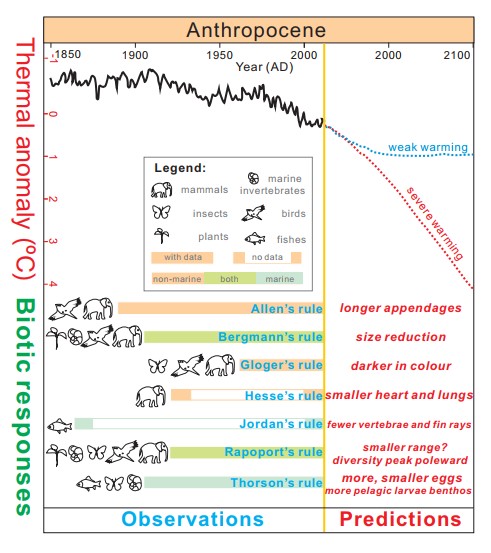Abstract
Models for future environmental change all involve global warming, whether slow or fast. Predicting how plants and animals will respond to such warming can be aided by using ecogeographic biological ‘rules’, some long-established, that make predictions based on observations in nature, as well as plausible physiological and ecological expectations. Bergmann’s rule is well known, namely that warm-blooded animals are generally smaller in warm climates, but six further temperature-related rules — Allen’s rule, Gloger’s rule, Hesse’s rule, Jordan’s rule, Rapoport’s rule and Thorson’s rule — are also worth considering as predictive tools. These rules have been discussed in the recent ecological and physiological literature, and in some cases meta-analytical studies of multiple studies show how they are applicable across taxa and in particular physical environmental situations.

Figure 1. Timeline of ecogeographic rules. The plot shows the date when the rule was enunciated, the person after whom it was named, as well as the publication of Darwin’s ‘Origin of species’ in 1859.

Figure 2. Predictions of potential biotic responses to future climate warming according to the ecogeographical rules.
Title: Predicting biotic responses to future climate warming based on classic ecogeographic rules
Authors: LiTian, Michael J.Benton
Source: Current Biology
Published: 2020.07.06
Link to the paper: https://authors.elsevier.com/a/1bMC93QW8Ru7xc